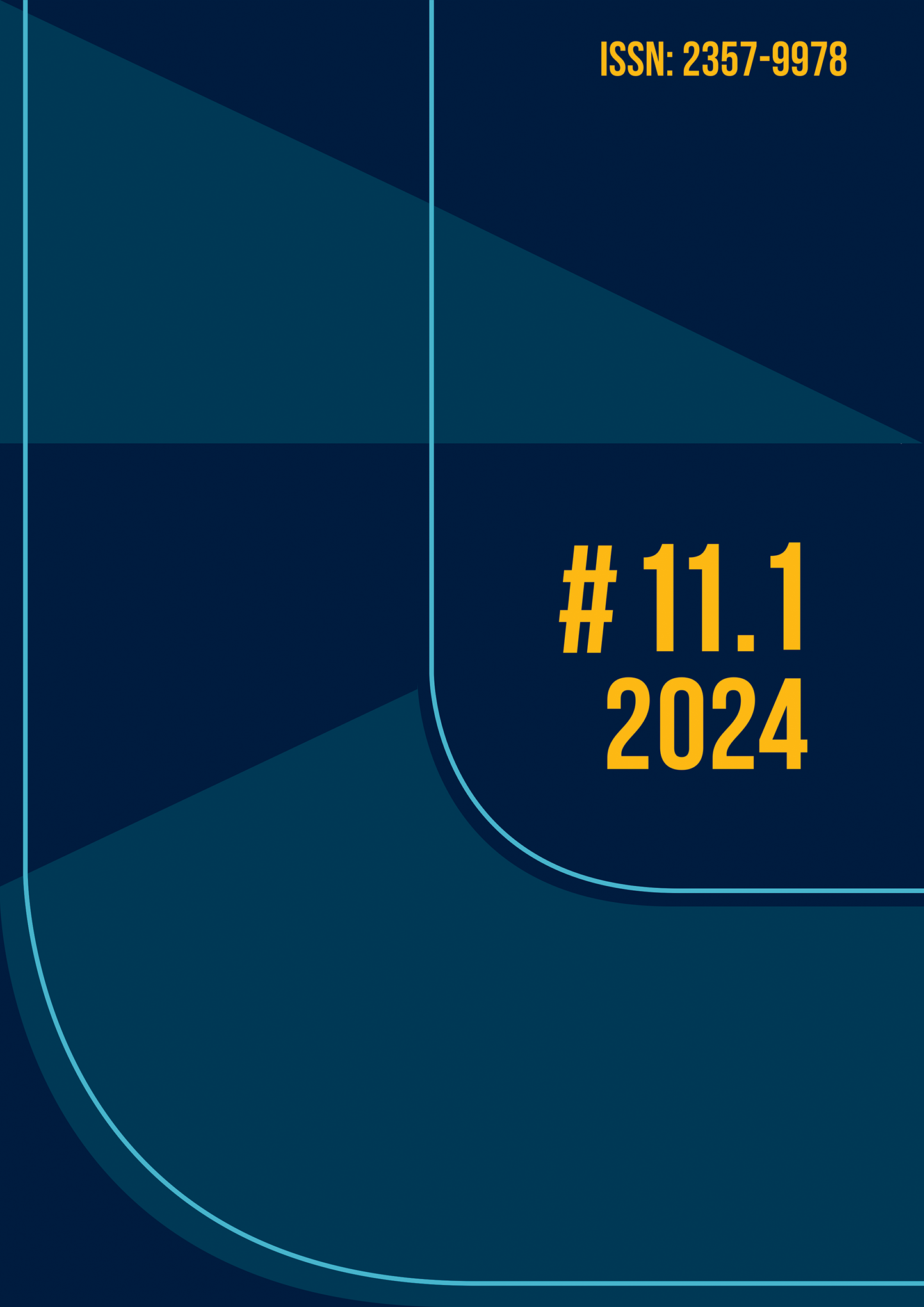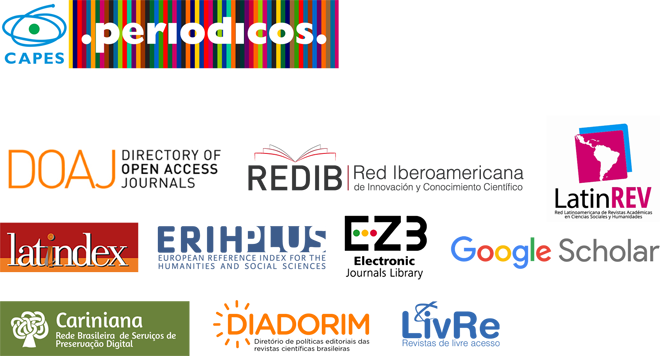Video as a Cultural Practice and Videographic Performativity in the Work "Janelas Afetivas" by Coletivo COM.6
DOI:
https://doi.org/10.36025/arj.v11i1.32170Keywords:
video, culture and technology, videographic performativity, Affective Windows, COM.6Abstract
The article deals with video as a cultural and technological practice and proposes a study of videographic performativity. For that, it analyzes the work Janelas Afetivas, from 2020, by the artistic collective COM.6, composed of a video call, on YouTube. The objective is to describe the relational structures and the aesthetic aspects of the video from an approach with the theoretical foundations of Andrew Feenberg and Don Ihde. The methodology started from a mapping of videos produced in the network space, online, during the years 2020 and 2021 and from the choice of works for analysis, among them Janelas Afetivas. The results point to an occupation of the online space by different manifestations in live video that explore a contaminated form of audiovisual language, which constantly acts in the social and cultural field to perpetuate itself as language and technological behavior, and from this results the competence and videographic performativity.
Downloads
References
AUSTIN, J. L. How to do things with words. Oxford Press, London, 1962.
BASTOS, Marcus; MORAN, Patrícia. Audiovisual ao vivo: tendências e conceitos. São Paulo: Intermeios, 2020.
BENTES, Ivana. Midia-Arte: Estéticas da Comunicação e Modelos Teóricos. In: Intercom – Sociedade Brasileira de Estudos Interdisciplinares da Comunicação XXVIII Congresso Brasileiro de Ciências da Comunicação. UERJ, 2005. p. 1-15.
CABRAL, Arthur. Prospecções afetivas: em tempos de pandemia. Brasília: MediaLab/UNB, 2020. Disponível em: http://medialab.unb.br/index.php/component/content/category/19-eventos?Itemid=101. Acesso em: 12 abr. 2023.
CARVALHO, Ana. Experiências e fruição nas práticas da performance audiovisual ao vivo. Teccogs: Revista Digital de Tecnologias Cognitivas, n. 6, p. 232-244, jan-jun 2012. Disponível em: https://revistas.pucsp.br/index.php/teccogs/article/view/52889/34702 Acesso em: 11 jan. 2024.
CUPANI, Alberto. Filosofia da Tecnologia: um convite. Florianópolis: UFSC, 2011.
EMMEIO#12.0. Janelas Afetivas. Brasília: MediaLab/UnB, 2020. Disponível em: https://www.youtube.com/playlist?list=PLxkIqaMJsWqUY0zIjqVVt2kD4KPeWiynq. Acesso em: 12 abr. 2023.
FEENBERG, Andrew. Critical Theory of Technology. New York: Oxford University Press. 1991.
FEENBERG, Andrew. Heidegger and Marcuse: The Catastrophe and Redemption of History. Routledge, 2004.
FEENBERG, Andrew. La Tecnología en custión. Buenos Aires: Prometeo Libros, 2016.
FEENBERG, Andrew. Questioning technology. Routledge;1999.
FEENBERG, Andrew. Tecnologia, Modernidade e Democracia. [Portugal]: Inovatec, 2018.
FEENBERG, Andrew. Ten Paradoxes of Technology. Techné: Research in Philosophy and Technology, v. 1, n. 14, p. 3-15, 2010.
FEENBERG, Andrew. Transforming Technology: A Critical Theory Revisited. Oxford University Press, 2002.
IHDE, Don. Postphenomenology and Technoscience. The Peking University Lectures. Suny Press, 2009.
IHDE, Don. Tecnologia e o Mundo da Vida: do Jardim à Terra. Chapecó: UFFS Editora, 2017.
KAC, Eduardo. A arte da Telepresença na Internet. In: DOMINGUES, Diana (org.). A arte no século XXI: a humanização das tecnologias. São Paulo: UNESP, 1997. p. 315-324.
KAC, Eduardo. Origem e Desenvolvimento da Arte Robótica. Cadernos da Pós-Graduação, Instituto de Artes, Unicamp, v. 2, n. 2, p. 18-28, 1998.
MALVA, Daniel et al. Janelas Afetivas: espaços de compartilhamento. In: ROCHA, Cleomar et al. (org.). Anais do VII Simpósio Internacional de Inovação em Mídias Interativas. HUB Eventos 2020. São Paulo: MediaLab/BR; PUC-SP, 2020. p. 189-198.
MARINCONDA, Pablo Rubén; MOLINA, Fernando Tula. Entrevista com Andrew Feenberg. Scientiae Studia. v. 7, n. 1, p. 165-171, 2009. DOI: https://doi.org/10.1590/S1678-31662009000100009
MELIN, Regina. Performance nas artes visuais. Rio de Janeiro: Zahar, 2008.
MINSKY, Marvin. Telepresence. Omini, p. 44-52, June, 1980. Disponível em: https://web.media.mit.edu/~minsky/papers/Telepresence.html. Acesso em: 9 jan.2024.
NUNES, Fábio Oliveira. Gênesis: Arte transgênica via Internet. Studium, Universidade de Campinas, São Paulo, n. 23, 2006. Disponível em: https://www.ekac.org/studium23.html. Acesso em: 9 jun. 2024.
SANTELLA, Lucia. Corpo e comunicação: sintoma da cultura. São Paulo: Paulus, 2004. 161 p.
SARZI-RIBEIRO, Regilene A. Corpo e videoarte no Brasil: desejos da parte e presenças do todo. Bauru, SP: Canal 6, 1996.
SARZI-RIBEIRO, Regilene A. O dispositivo videográfico e as narrativas de si mesmo e do outro: videocorpo. Revista Palíndromo, v. 10, n. 21, p. 101-115, jul. 2018. DOI: http://dx.doi.org/10.5965/2175234610212018101.
Downloads
Published
How to Cite
Issue
Section
License
Copyright (c) 2024 Regilene Aparecida Sarzi-Ribeiro (Autor)

This work is licensed under a Creative Commons Attribution-NonCommercial-ShareAlike 4.0 International License.

This work is licensed under a Attribution-NonCommercial-ShareAlike 4.0 International (CC BY-NC-SA 4.0) License.
Authors retain copyright, while licensing their work under a Attribution-NonCommercial-ShareAlike 4.0 International (CC BY-NC-SA 4.0) License.


 English
English Português (Brasil)
Português (Brasil)
